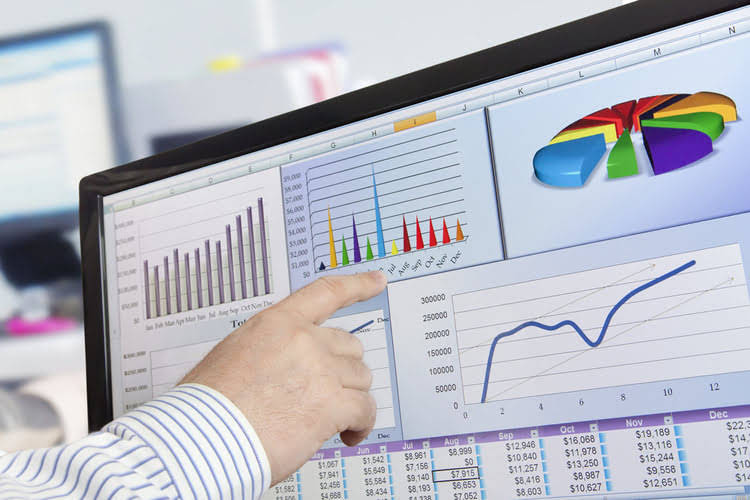
An ERP system doesn’t always eliminate inefficiencies within a business or improve everything. The company might need to rethink how it’s organized or risk ending up with incompatible technology. Well-suited for a postmodern ERP approach due to complex operational requirements, broad geographical reach and a need for greater business agility in a highly competitive environment. It’s common nowadays for commentators to proclaim that ERP is “dead,” or that the end is at least near.
The Past, Present and Future of Asset Management and Enterprise … – MSDynamicsWorld
The Past, Present and Future of Asset Management and Enterprise ….
Posted: Wed, 11 Oct 2023 14:46:26 GMT [source]
Choosing an ERP system is among the most challenging decisions IT leaders face. In addition to the above tier criteria, there is a wide range of features and capabilities to consider. With any industry, it is important to pick an ERP vendor with industry experience. Educating a vendor about the nuances of a new industry is very time consuming.
Quelles sont les différences entre les ERP (ou PGI) et les CRM ?
Better suited for traditional, all-in-one ERP suites due to the potential expense of multiple software systems, time required to integrate independent vendor products and the need to for room to grow within software solutions. In recent years, some vendors have stopped using tiers to categorize their products. This is largely because there are now more ways to scale software without needing to switch products. In the past, a company might start with a Tier 3 ERP and then move up to a Tier 2 or Tier 1 solution. Today, Tier 3 products can grow with the business, removing the need to go out and purchase a replacement software.
They can integrate with existing databases or, ideally, run on newer, powerful in-memory databases. ERP solutions are designed for businesses of all sizes – small, midsize, and large. You can also get industry- and company-specific functionality to meet unique business needs. Regardless of your business sector and size, you’ll want to plan your ERP erp defined implementation project carefully, following best practices. In the mid 1980’s, competition in the manufacturing sector was exploding and new tools were required. New MRP II software integrated accounting and finance, sales, purchasing, inventory, and manufacturing planning and scheduling – providing the manufacturer with an integrated system.
Other definitions of ERP:
The tool can be configured to automatically email notifications to the business owner, and transition the risk assessment to various stages in the process depending on the owner’s responses or lack thereof. Enterprise appliance transaction modules (EATM)—These devices communicate directly with plant floor equipment and with the https://www.bookstime.com/ ERP system via methods supported by the ERP system. EATM can employ a staging table, web services, or system–specific program interfaces (APIs). Then, the hosting company loads the applications onto the server the client is renting, and both parties begin working to integrate the client’s processes and data into the platform.
Which ones are the main applications depends on the business and the industry it operates in. Most companies can benefit from supply chain management, logistics, and financial applications to help them streamline their operations and expenses. Their antiquated inventory tracking system did not account for changing costs, and the accounting software could not record the metrics needed for key financial statements.
Standardize and Speed up Manufacturing Processes
You’ll be able to evaluate whether ERP is needed and how to develop the appropriate IT infrastructure that will allow the ERP (and business) to thrive. Popular examples of ERP include Systems Analysis and Program Development (more commonly known as SAP), Oracle ERP, and Microsoft Dynamics 365. IDC estimates that use of cloud-based ERP will more than double between 2019 and 2024. Several vendors are popular with SMBs, notably Acumatica, Sage Intacct and NetSuite, the SaaS ERP pioneer that is now part of Oracle. MRP didn’t go away, and the still-distinct purposes of MRP and ERP ensure a role for both.

Today, many ERP systems are housed online in “the cloud” rather than directly within a business’ physical data center. The benefits of cloud-based ERPs are that they can centralize all of a business’ relevant data online and make it available to employees around the world. Systems are also routinely updated by service providers and are often equipped with artificial intelligence and advanced analytics capabilities, such as predictive modeling. NetSuite has packaged the experience gained from tens of thousands of worldwide deployments over two decades into a set of leading practices that pave a clear path to success and are proven to deliver rapid business value. With NetSuite, you go live in a predictable timeframe — smart, stepped implementations begin with sales and span the entire customer lifecycle, so there’s continuity from sales to services to support. According to Gartner, one of the core digital business accelerators is to “banish drags” – in other words, eliminate any negative force that slows the business down, including outdated processes and systems.